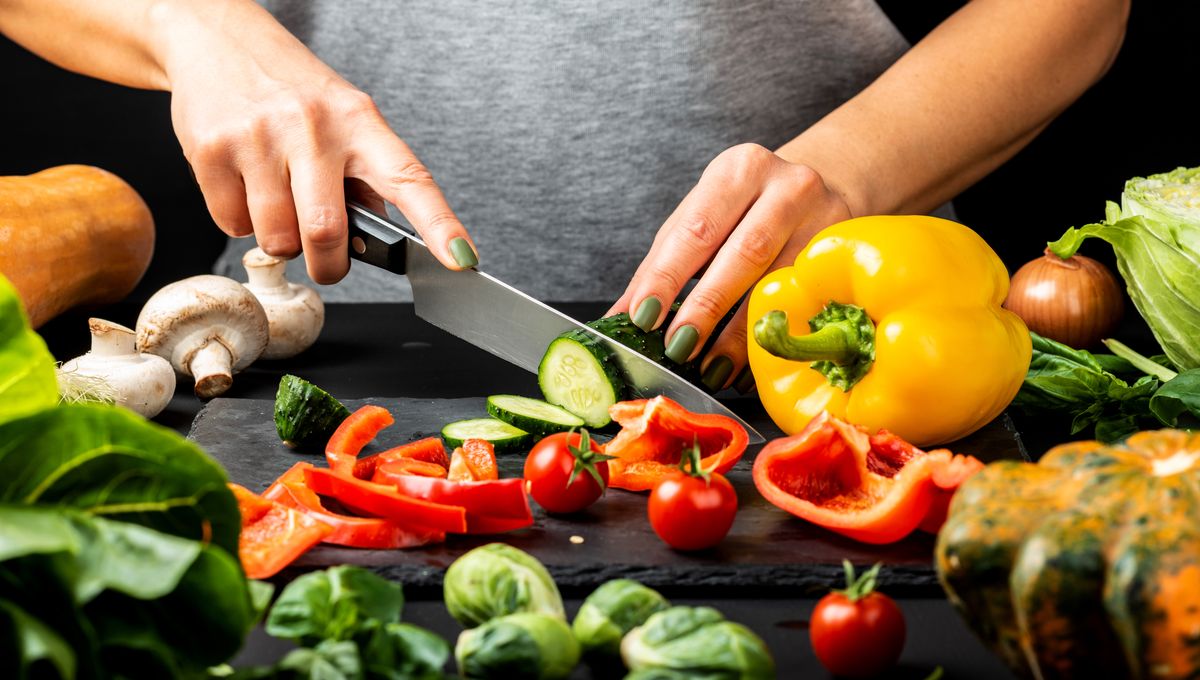
Are you partial to a sliced onion over a diced one? Perhaps you’ve always thought that apples are more delicious chopped up than whole. It might seem doubtful that the way in which a food is cut would make it more or less flavorsome, but science suggests there might actually be something to it.
In understanding how that’s the case, it’s first important to consider that taste and flavor are two separate things. Taste is a sense and involves specialized receptors (aka tastebuds) on the tongue. Flavor, on the other hand, can involve a whole bunch of different sensations – exactly which ones are a matter of debate, but most agree that smell is just as key as taste.
The difference in smell depending on whether or not you cut something up is one of the factors that can explain why some foods might be more or less tasty to someone, and it comes down to chemistry.
“If you cut an onion or garlic, you release an enzyme called alliinase that produces the typical pungency or onion or garlic aroma, which really isn’t there when it’s intact,” Dr Charles Forney, a research scientist at Agriculture and Agri-Food Canada, explained to NPR. “The enzymatic reaction forms the flavor — so the more finely it’s cut, the more flavor that will be released.”
Similarly, that might mean that your tastebuds get a hit of chemicals when you first pop a bit of garlic or onion in your mouth, rather than gradually being released as you chew (or rub it on your feet).
However, it’s not all about chemistry. Some food experts believe that texture plays a role in flavor perception.
“If you put a vegetable that is more rounded in your mouth, your mind is generally going to be thinking about something that has more of a succulence to it,” Brendan Walsh, dean of culinary arts at the Culinary Institute of America, told NPR. “Something cut in squares is going to be a little bit more toothsome, with a jagged edge, and will give the impression of something rugged or tough. Your mind will think something is flavorful if it is smoother.”
Researchers have also suggested that our expectations of what a food’s taste or flavor will be like prior to actually eating it could play a role in our flavor experience – meaning that the shape of a food, depending on how you cut it, could affect how you perceive its flavor.
That became particularly apparent back in 2013, when chocolate manufacturer Cadbury was on the receiving end of public uproar after changing its Dairy Milk bars from a rectangular shape to a more rounded one. Many people claimed that the bar tasted sweeter, despite the fact that the company said the recipe hadn’t changed.
According to a paper by University of Oxford psychologist Professor Charles Spence, it comes down to how our brains associate shapes with certain tastes.
“People are known to associate sweetness with roundness and angularity with bitterness and, hence, making a traditionally rectangular food rounder may be expected to alter the perceived taste by priming notions of sweetness in the mind of the consumer,” Spence writes.
So, if that wedge of watermelon you just tucked into seems sweeter than if you’d diced it, it could be chemistry – but it might just be that your brain is primed to think that way.
Source Link: Does The Way Food Is Cut Change Its Flavor?